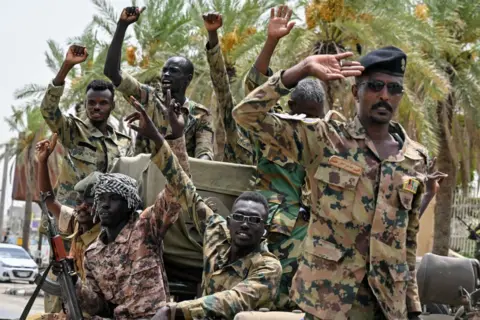Famine hits Sudan as peace talks fall short yet again
Famine is ravaging Sudan.
The Sudanese Armed Forces (SAF) – which claims to be the government of Sudan – took a small step towards alleviating that famine earlier this week by allowing 15 UN aid lorries to cross the border from Chad to bring food to the starving.
Aid agencies hope that it opens the door to a full-scale relief effort that can save millions of lives.
But they fear it is just a symbolic concession – too little and too late.
Four weeks ago, the UN-accredited Integrated food security Phase Classification (IPC) system said that famine conditions existed in parts of Darfur, Sudan’s westernmost region.
This was no surprise.
Sudan’s humanitarian catastrophe has been the largest in the world for many months. More than half of Sudan’s 45 million people need urgent relief aid.
More than 12 million are displaced, including nearly two million refugees in neighbouring countries – Chad, Egypt, and South Sudan.
Some food security specialists fear that as many as 2.5 million people could die from hunger by the end of this year.
Starvation as a weapon
While the roots of Sudan’s hunger lie in decades of economic mismanagement, the legacy of devastating wars, and drought made worse by climate crisis the trigger for today’s famine is the use of starvation as a weapon.
War erupted in April last year between the SAF, under Gen Abdel Fattah al-Burhan, and the paramilitary Rapid Support Forces (RSF) led by Gen Mohamed Hamdan Dagolo, known as “Hemedti”.
The war soon devastated Sudanese communities.
Like a swarm of human locusts, RSF militiamen rampaged through the capital, Khartoum, stripping it bare of anything that could be pillaged and resold. The force also vandalised vital infrastructure such as hospitals and schools.
The same story was repeated wherever the RSF advanced.
The breadbasket regions of Gezira and Sennar along the Blue Nile, a place of vast irrigated farms, have been ravaged.
People there are going hungry for the first time in generations.
Starvation is worst in Darfur, especially in el-Fasher, the only city in the region still controlled by the army and its local allies.
Surrounded by the RSF, the city depends on precarious supply routes that cross the battle lines. It is in the Zamzam camp for displaced people near el-Fasher that the aid group Médecins sans Frontières (MSF) first reported famine levels of malnutrition.
For its part, the army has fallen back on its tried-and-tested strategy of cutting off rebel-held areas. Its logic is that if it can choke off external supplies, the RSF’s local supporters will become discontented and some of its units may defect.
That tactic worked well when it was fighting the long war in southern Sudan from 1983 to 2005. Its generals regret that they allowed the UN to send aid, which, they believe, sustained the rebellion for long enough to enable the southerners to claim their independence.
The SAF controls Port Sudan, the country’s only port and its major route for imports. Even more importantly, the United Nations recognises the SAF as the sovereign government.
 AFP
AFP


